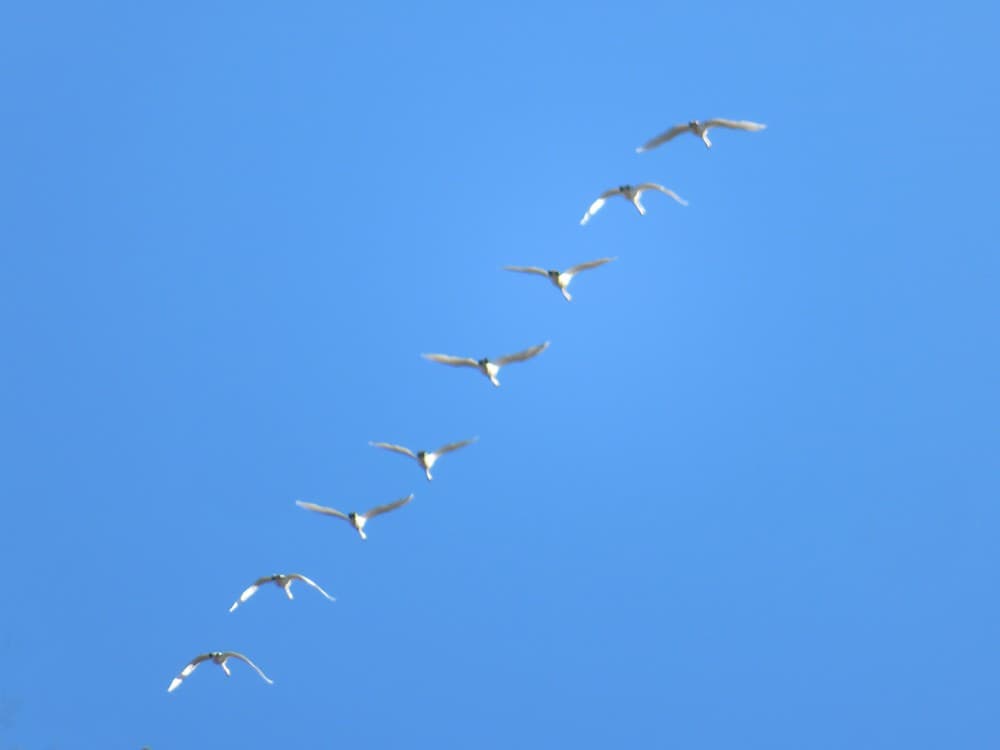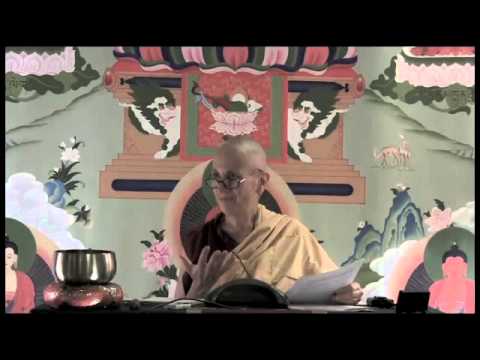How to set up an altar
- Where to set up the altar
- Symbols of the Buddha’s body, speech, and mind
- A place to make friends with ourselves and the Buddha
I wanted to first explain about how to set up an altar, and why to set up an altar. We set up an altar or shrine so that we have a physical representation that reminds us of the qualities that we want to develop, and it also acts as a base in the presence of which we can make offerings and do purification and so on.
It’s really nice, in your home or wherever you are, to have a little shrine. Or a big shrine. You can put it out in your living room, you can put it in another room. If you’re married—or even if you’re not married—better not to put it in your bedroom if you have a partner. And better not to put it in a room where there’s a lot of other stuff, like your computer and your kids’ toys, and so on. Because if you put your shrine there then it’s very tempting to get up and go check the computer, or whatever. Okay? So have a little corner someplace, it doesn’t need to be large. But that’s kind of your quiet space where you can go and become friends with yourself, become friends with the Buddha.
The way we set up the altar is we have symbols of the Buddha’s body, speech, and mind. The statue is the symbol of the Buddha’s body. We always have a Buddha statue at the center of the altar. We may have other deities and do their practices, but we put them to the side. Like we have Chenrezig and Amitahba and Je Rinpoche and Vajrasattva and Tara over here, but the center figure is always the Buddha because everything came from the Buddha.
Then, on the Buddha’s right side—in other words, on the left as we look at the Buddha—we have Dharma texts. Over here [to the left as we look at it] we have the Kangyur. Those are the sutras and tantras that the Buddha spoke. We also have the Tengyur on this side [to the left as we look at it], which are the great Indian commentaries. If you have a shrine at home it’s just sufficient to have a text on this side [the left as you look at it] of your altar. If it can be one of the Prajnaparamita texts—even a hand-written copy of the Heart Sutra—that’s really good to do. So the text represents the Buddha’s speech.
And then on the Buddha’s left side [the right as we look at it] we have a stupa that represents the Buddha’s mind. In this case here [in the meditation hall at Sravasti Abbey] we have a replica of the stupa at Bodh Gaya.
If you have a more elaborate altar—like we have here—then you have representations of the two main lineages. So again on the Buddha’s right [on the left as we look at the Buddha] there’s Maitreya, who is the one from whom the vast lineage of bodhicitta stems. And then on this side [the right as you look at it] we have Manjushri, the one from whom the profound lineage of wisdom stems.
And then above the Buddha, and everything else, you put a picture of your spiritual mentor. We have His Holiness the Dalai Lama here. Because different people at the Abbey sometimes have different teachers, we just chose to put His Holiness, because he’s the one we all have. And also, we didn’t want everything to get too cluttered. But on your personal altar you may have picture or photos of your other teachers as well.
That’s the way the altar is set up. And it’s very nice if you really stop and look at your altar from time to time during the day. Because especially when you’re flustered and you’re angry, or whatever … you know, you kind of walk into the room and *grumble grumble* and then you look and the Buddha’s just sitting there and he’s so calm. And then you remember, “Oh, I can be that way.” And you get in touch with your own calm energy. So, it can be very helpful that way.
Part 2 of this series:
Water bowl offering
Part 3 of this series:
Venerable Thubten Chodron
Venerable Chodron emphasizes the practical application of Buddha’s teachings in our daily lives and is especially skilled at explaining them in ways easily understood and practiced by Westerners. She is well known for her warm, humorous, and lucid teachings. She was ordained as a Buddhist nun in 1977 by Kyabje Ling Rinpoche in Dharamsala, India, and in 1986 she received bhikshuni (full) ordination in Taiwan. Read her full bio.


